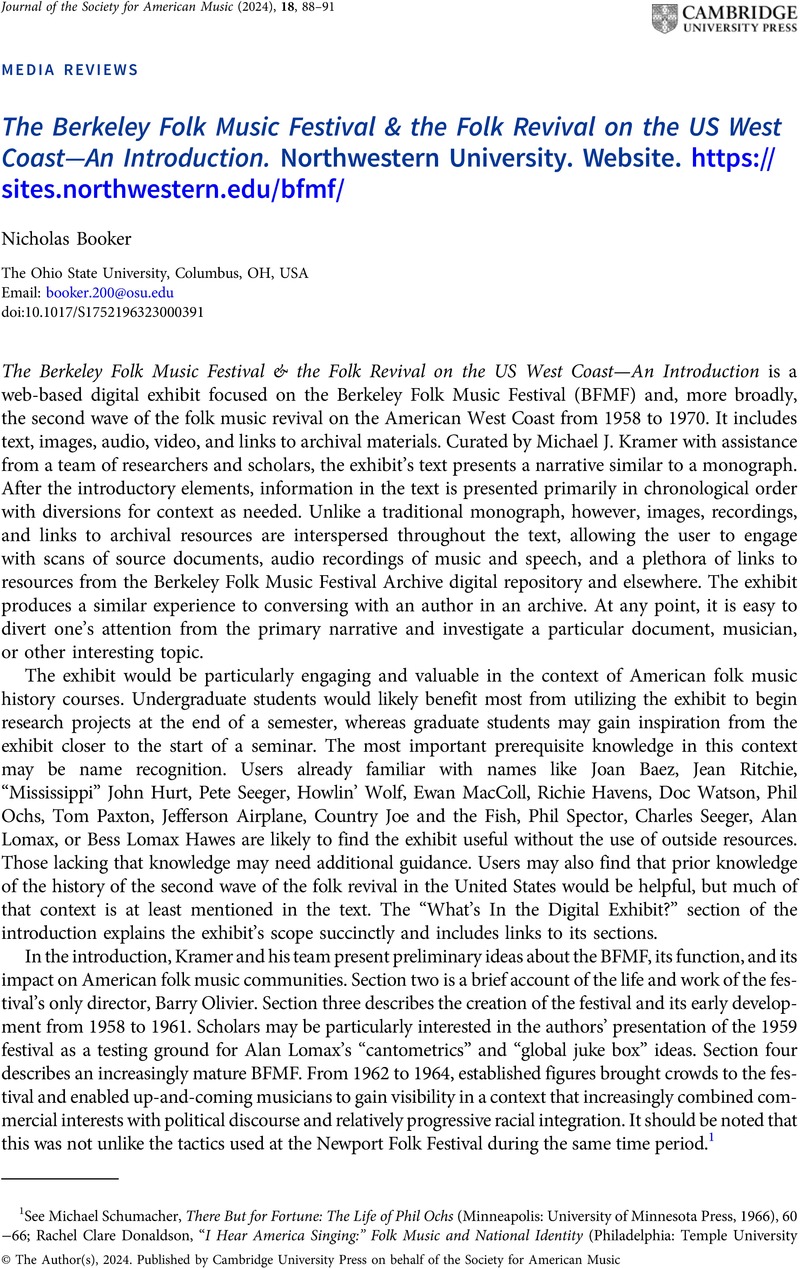No CrossRef data available.
Published online by Cambridge University Press: 26 February 2024

1 See Schumacher, Michael, There But for Fortune: The Life of Phil Ochs (Minneapolis: University of Minnesota Press, 1966), 60−66Google Scholar; Donaldson, Rachel Clare, “I Hear America Singing:” Folk Music and National Identity (Philadelphia: Temple University Press, 2014), 134−36CrossRefGoogle Scholar; Eyerman, Ron and Barretta, Scott, “From the 30s to the 60s: The Folk Music Revival in the United States,” Theory and Society 25, no. 4 (1996): 501−43CrossRefGoogle Scholar, https://doi.org/10.1007/BF00160675; Mitchell, Gillian A. M., “Visions of Diversity: Cultural Pluralism and the Nation in the Folk Music Revival Movement of the United States and Canada, 1958–65,” Journal of American Studies 40, no. 3 (2006): 600−2CrossRefGoogle Scholar, https://www.cambridge.org/core/article/visions-of-diversity-cultural-pluralism-and-the-nation-in-the-folk-music-revival-movement-of-the-united-states-and-canada-195865/F898920E6CAD87639BA78320DBB44118.